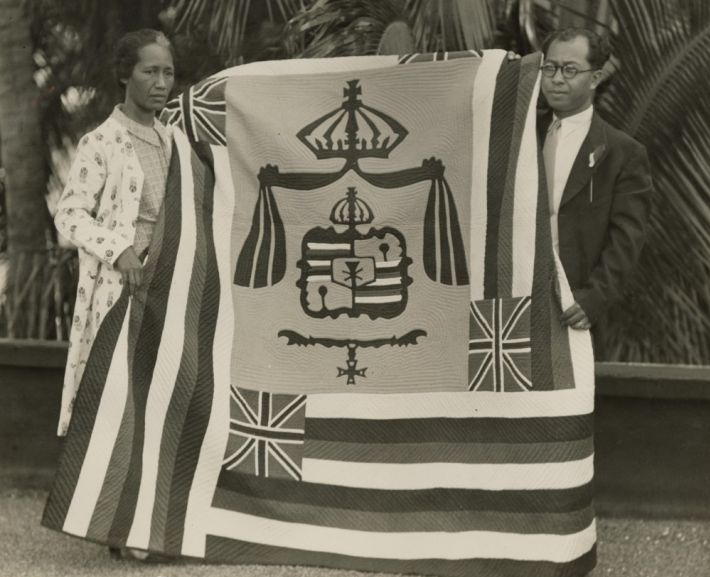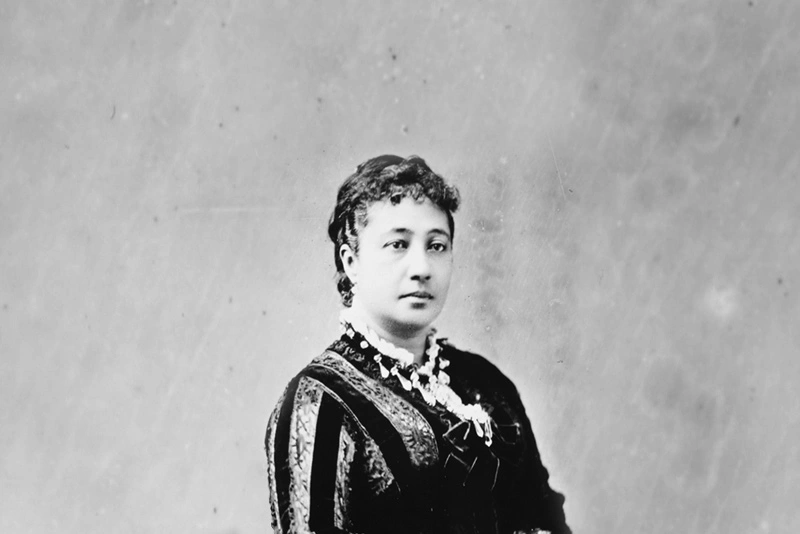This year marks the 129th year since the overthrow of Queen Liliʻuokalani, affectionately known as Lydia Kamakaʻeha. In this Kūkahekahe, we examine her extraordinary fortitude in the days surrounding this devastating event, as well as her great aloha for her people.
On Jan.17, 1893, Queen Liliʻuokalani was deposed from the throne of the Hawaiian Kingdom. The events of that day were the result of political tension that had been building for some time, which were brought to a crescendo by the queen’s attempt to adopt a new constitution in accordance with the desires of her subjects. In “Hawaiʻi’s Story by Hawaiʻi’s Queen,” Liliʻuokalani wrote:
“Petitions poured in from every part of the Islands for a new constitution; these were addressed to myself as the reigning sovereign. They were supported by petitions addressed to the Hui Kalaiaina, who in turn endorsed and forwarded them to me. It was estimated by those in position to know, that out of a possible nine thousand five hundred registered voters, six thousand five hundred, or two-thirds, had signed these petitions. To have ignored or disregarded so general a request I must have been deaf to the voice of the people, which tradition tells us is the voice of God. No true Hawaiian chief would have done other than to promise a consideration of their wishes.”
The so-called Provisional Government was proclaimed with the support and landing of American troops by the United States Minister to the Hawaiian Kingdom, John L. Stevens. To avoid the very real threat of bloodshed, Queen Liliʻuokalani was advised by her ministers to surrender and yield under protest submitted to both the Provisional Government and the United States Government in Washington. Her protest read:
“I Liliʻuokalani, by the Grace of God, and under the constitution of the Kingdom, Queen, do hereby solemnly protest against any and all acts done against myself and the constitutional Government of the Hawaiian Kingdom by certain persons claiming to have established a provision government of and for this Kingdom.
“Then I yield to the superior force of the United States of America, whose minister plenipotentiary, His Excellence John L. Stevens, has caused United States troops to be landed at Honolulu, and declared that he would support the said provisional government.
“Now, to avoid any collision of armed forces, and perhaps the loss of life, I do, under this protest and impelled by said force, yield my authority until such time as the Government of the United States shall, upon the facts being presented to it, undo the action of its representative, and reinstate me in the authority which I claim as the constitutional sovereign of the Hawaiian Islands.”
The Queen’s protest was printed in its entirety the very next day in the Hawaiian language newspaper, “Hawaii Holomua:”
“KUKALA KUE A KE ALIIAIMOKU. “O wau, Liliʻuokalani, ma ka lokomaikai o ke Akua, malalo o ke Kumukanawai o ke Aupuni Hawaii, Moiwahine, ma keia ke hoike paa nei i Koʻu kue i kekahi hana a mau hana paha a pau i lawelawe ia e kue ana Ia’u iho a me ke Aupuni Kumukanawai o ke Aupuni Hawaii e kekahi poe e koi ana ua kukulu lakou he Aupuni Kuikawa no ka manawa no keia Aupuni. “Ke ae wale nei no Au mamuli o ka mana oi ikaika o Amerika Huipuia nona hoi ke Kuhina Elele Nui, ka Meamahaloia John L. Stevens, ua kauoha aku i na koa o Amerika Huipuia e hoopae ia mai ma Honolulu, a ua kukala ae e kokua no oia i ua Aupuni Kuikawa ‘ia no ka Manawa i oleloia. “Nolaila, i mea e kaupale aku ai i na hookuia ana o na puali i hoolawa ia me na lako kaua, a malia paha o hoopoino ia ke ola; nolaila, malalo o keia Kuahaua Kue a i kauhola ia hoi e ua mana ikaika ‘la, ke ae wale nei no Au e panee aku i Koʻu Mana a hiki i ka manawa a ke Aupuni o Amerika Huipuia, mamuli o na mea oiaio e waiho ia aku ai imua ona, e hoololi ai i na hana a kona Luna Aupuni a e hoonoho hou Iaʻu maluna o ka mana Aʻu e koi nei ma ke ano Aliiaimoku o ka Paeaina Hawaii.” “Hanaia ma Honolulu, i keia la 17 o Ianuari, M. H. 1893.” [Kakauinoaia:] LILIʻUOKALANI, R.
In the days, weeks, and years following the overthrow, many kingdom subjects expressed their aloha and support for the queen as well as for the aupuni Hawaiʻi, Hawaiian government. From kapa kuiki, beautiful quilts sewn with designs featuring the hae Hawaiʻi (Hawaiian flag) and kalaunu (crown), to hundreds of newspaper articles, petitions drives, marches and more, the outpouring of aloha then and now remains a testament to a lāhui that is ʻonipaʻa, steadfast, resolute, and determined.
Read “Hawaiʻi’s Story by Hawaiʻi’s Queen” here:
In 2013, Hui Hānai, an auxillary organization of the Queen Liliʻuokalani Children’s Center, reprinted a beautiful version of “Hawaiʻi’s Story by Hawaiʻi’s Queen,” which includes additional material and annotations from David Forbes. In 2020, Hui Hānai also published “The Diaries of Queen Liliʻuokalani,” which included personal diaries that were confiscated from Liliʻuokalani by the Republic of Hawaiʻi. We encourage you to check out these incredible resources!

A kapa kuiki hae Hawaiʻi, a Hawaiian flag quilt named “Kuʻu Hae Aloha” (My Beloved Flag) held by Mrs. and Mr. Frank Aseu Young. The quilt was probably made by Mrs. Aseu Young. Circa 1935. Photo courtesy of the Hawaiʻi State Archives.

“He Wehi no ke Kalaunu,” a mele for written for the Kingdom and Monarchy by Mrs. L. K. Kahilikapu on April 21, 1893. Published in the “Hawaii Holomua” on April 29, 1893.
TAGS
kūkahekahe,overthrow,queen liliʻuokalani
CATEGORIES
Kaipuolono Article, Regions, Themes, Culture, Community, Hawaii Newsroom, KS Hawaii Home, Kapalama Newsroom, Kapalama Home, Maui Newsroom, KS Maui Home, Newsroom, Campus Programs, Hawaii, Kapalama, Maui, Community Education, Oiwi Leaders, Hawaii campus, Kapalama campus, Maui campus
Print with photos
Print text only










